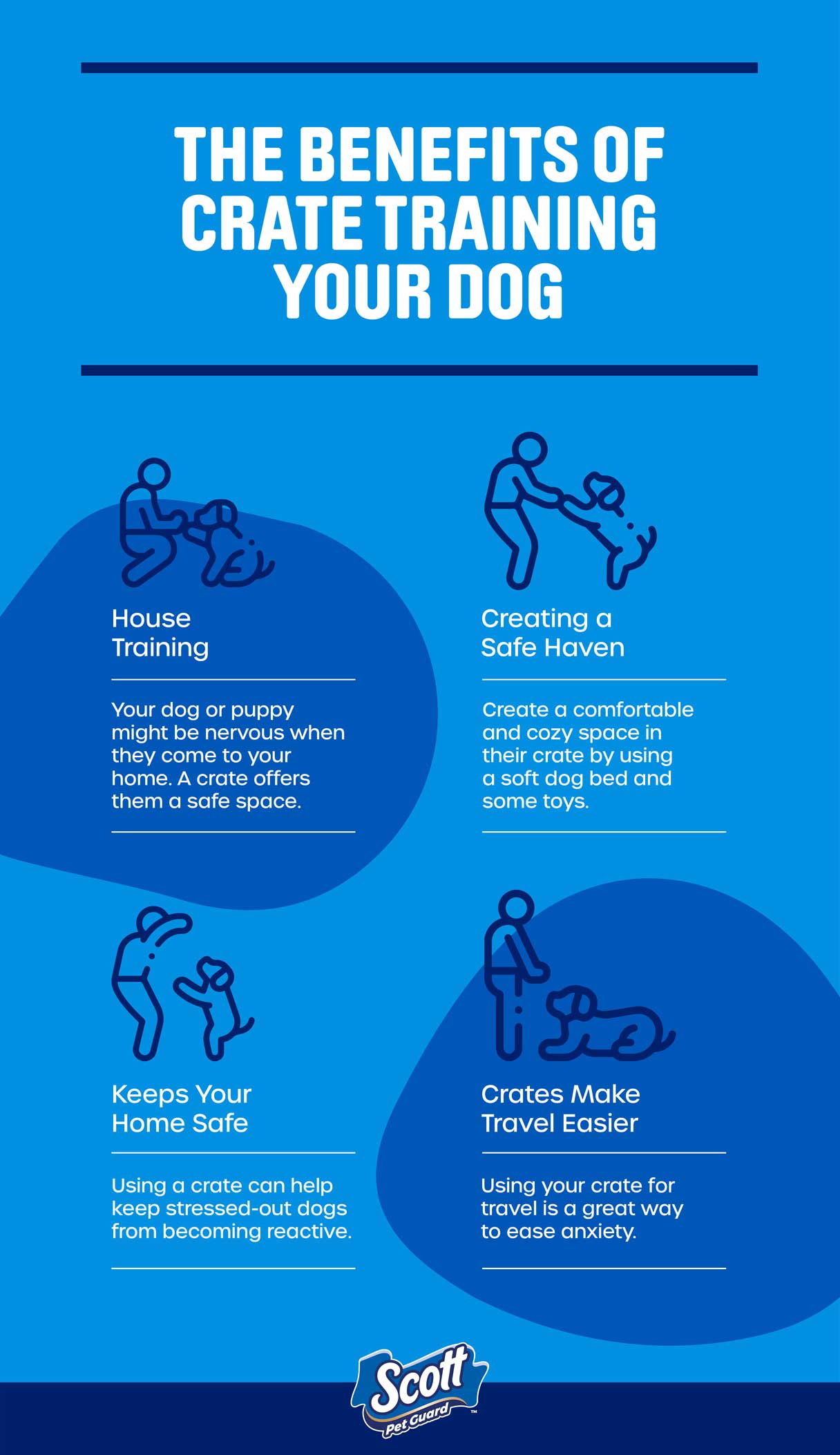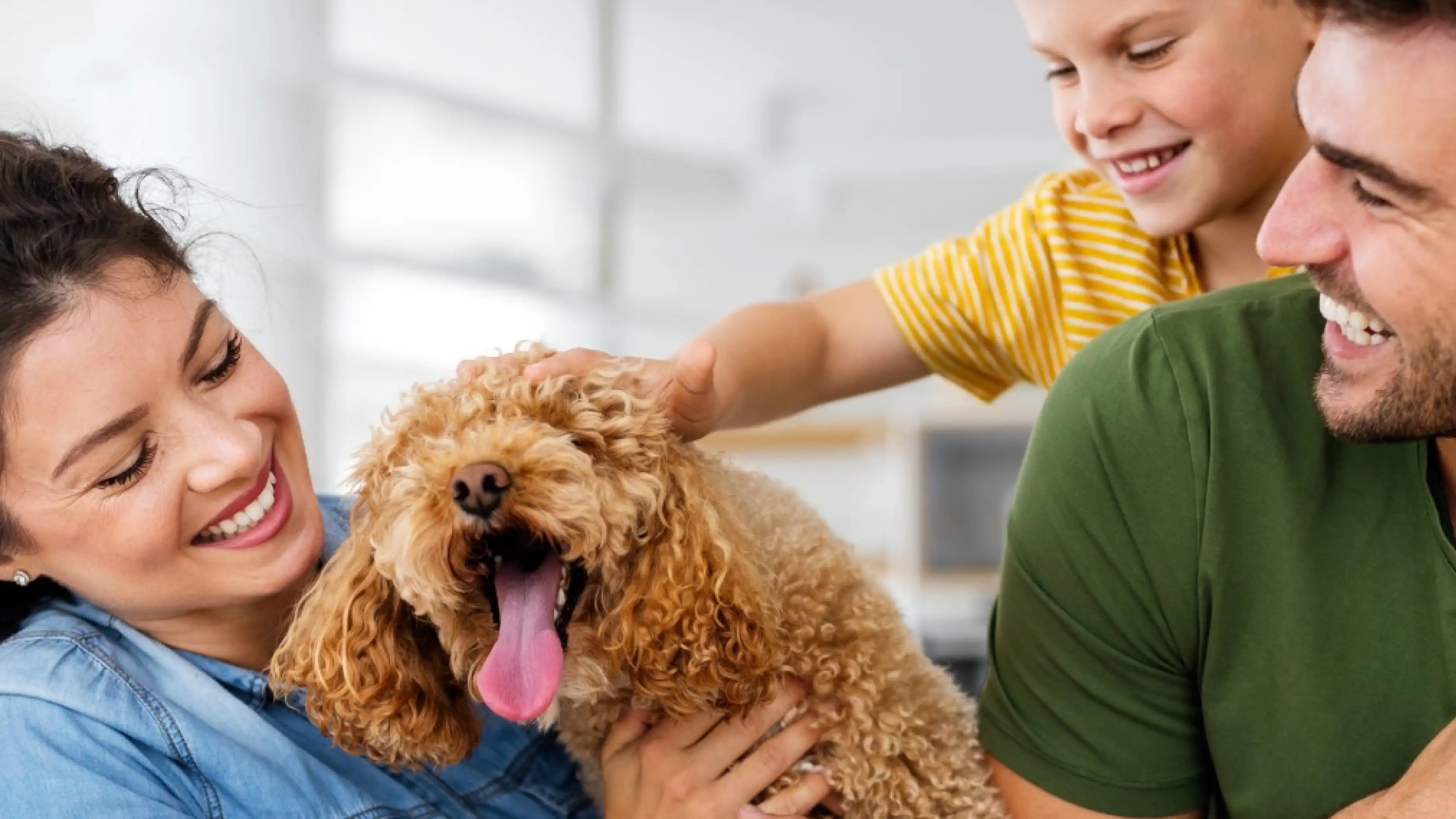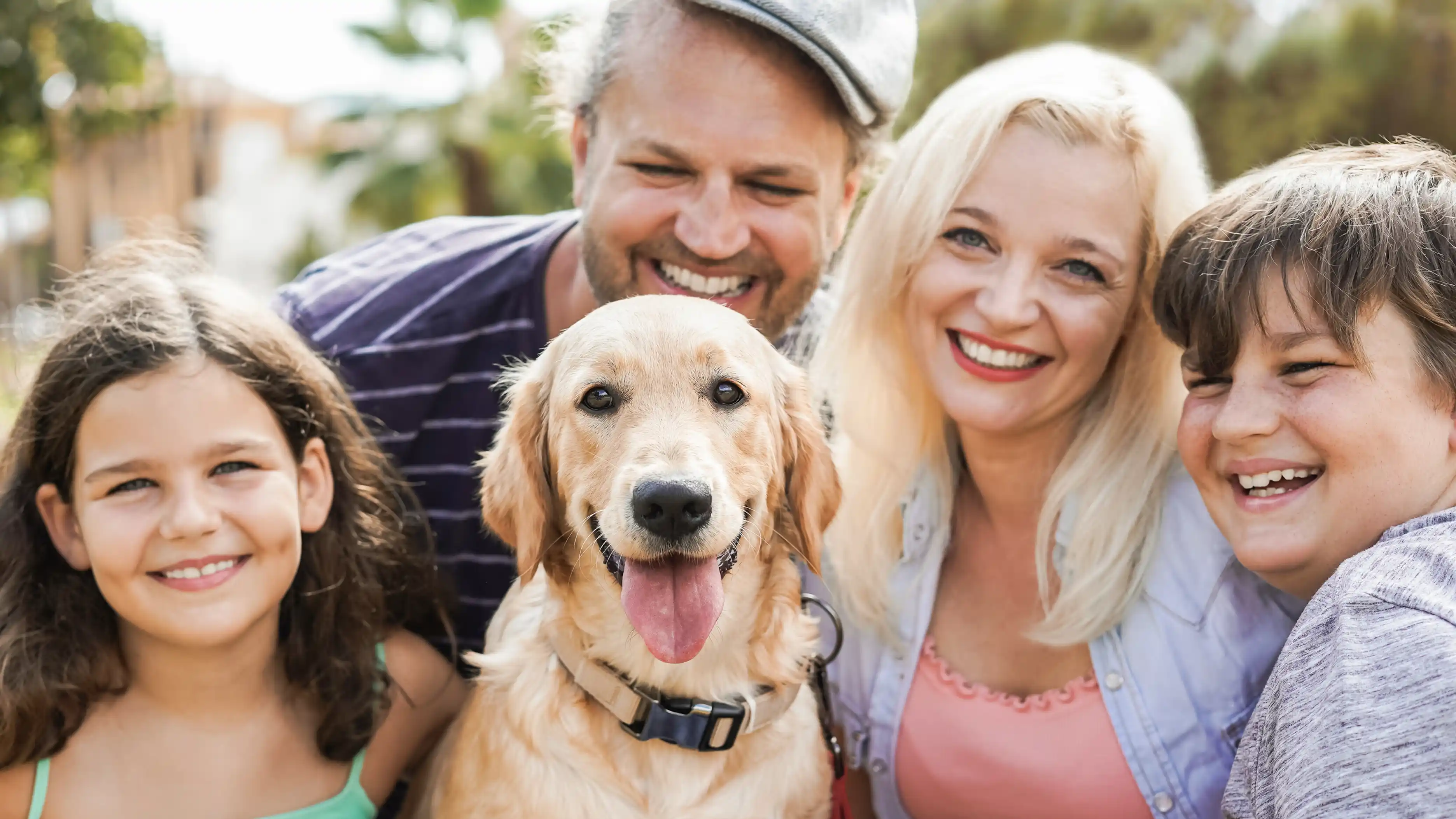A Guide to Crate Train Your Dog or Puppy
Are you navigating the fun - and sometimes - frustrating adventure that comes with crate training your dog or puppy?
Filled with thrills and spills, this time helps your dog get used to being in their crate, which may be essential for sleep, travel, or when you’re away. It is important to create a safe and welcoming environment for them as they adjust to the new surroundings of your home.
Paired with our Scott® Pet Guard Advanced Dog Pads or our Scott® Pet Guard Dog Pads, this guide will help make puppy potty training and crating easy as you and your dog acclimate to this new journey together.
Why Are Dog Crates Important?
Designed to replicate the safety and comfort of a dogs’ natural den, dog crates or kennels are typically made of plastic, metal, wire as well as fabric. Dog crates create a secure and comfortable place for your dog or puppy to adjust to their new environment.
A comfortable dog crate also offers a safe space to contain your pet while traveling or for safety and security reasons. To create a space that is ideal for relaxing in, make sure you buy a crate that is large enough for them to comfortably stand and turn around in.
The Benefits of Crate Training Your Dog
Crate training your dog or puppy while they adjust to your home offers many benefits. This includes from helping with potty training to creating a space where they can feel relaxed and safe, here are some of the reasons to crate to train your furry friend.

House Training
When your dog or puppy is first introduced to your home, they might be nervous and afraid. With new sights, smells, and sounds, your dog will need some time to get used to your home. A crate offers your dog a safe space to rest during this adjustment period.
A crate is also a good way to help potty train your pet while in this new space. Using Scott® Pet Guard Dog Pads in the crate, kennel, pen, or play area to maximize flexibility when potty training your puppy or dog.
Leaving you stress-free and your furniture protected, the Scott® Pet Guard Advanced Dog Pads are designed to offer you up to 16 hours of absorption. Engineered with a training scent, these dog pads making it easier for your dog or puppy to associate them with bathroom time as well as designed to maintain odors where you can place them anywhere around your house.
Creating a Safe Haven for Your Pup
Introducing a dog or puppy to your home can be overwhelming, especially if you have kids. Away from the comfort of the space they’d previously known and thrust into a new environment your pup or dog now must adjust to an array of new sounds and spaces to explore.
Since this can cause stress, it is important to create a comfortable and cozy space in their crate by using a soft dog bed and perhaps some toys will help your pet rest while they acclimate.
Keeps Your Home Safe
Using a crate can help keep anxious or stressed-out dogs from becoming reactive. It can also help protect your home from destructive dogs or puppies breaking and destroying furniture and other possessions. This can even keep your puppy safe, depending on what they’re chewing, which might be a choking hazard or risk of ingesting harmful chemicals. By keeping your pets crated and safe you can stay stress-free and avoid needing to pay expensive vet bills.
Crates Make Travel Easier
Not only an asset in for your home, but a huge benefit of crate also training your dog is that it allows them to be included in family events. Instead of leaving your pup behind, you can bring them on a road trip or vacation and make lasting memories with them.
Once your dog is used to their crate, using it for travel is a great way to ease anxiety while on the road as well as to keep your car clean from any accidents. Using a crate can make it easier and more comfortable for your dog to lie down and sleep during their journey. You can also include their favorite toys, a soft blanket, and their dog bed for added comfort.
How to Crate Train Your Dog
Taking the time and following proper steps to train your dog will go a long way to making the crating process easier and stress-free. Follow the steps to make training your dog as comfortable as possible.
Introduce Your Dog to the Crate
Once you’ve picked the perfect dog crate for your dog, it’s time to introduce them to their new space.
Place the crate in a space where household activity happens such as the living room. Since dogs are social animals, doing this can help them be less anxious or afraid around company and help them feel at ease.
Outfit the crate with a comfortable and cozy dog bed and maybe some toys to make the space more appealing and calming.
Remember that this process will take. Be patient, consistent, and don’t try to force them into the crate. Allow them to set the pace as you provide guidance.
Pro tip: Placing treats next to their favorite toys in the crate is a great way to encourage their curiosity in exploring their new home.
Use Rewards to Encourage Crate Time
Using rewards -- such as enticing them with their favorite dog snacks -- may help encourage your dog to spend time in the crate.
Not only limited to snacks, feeding your dog or puppy in the crate is another great way to create positive associations with it.
Start slowly by placing the bowl closer to the crate entrance. As they become more comfortable, move the bowl closer to the back of the crate. Once your dog is comfortable eating in the crate you can begin closing the door while they’re eating and increase the length of time the crate stays closed.
Schedule Crate Time
When you first start crate training your dog it’s important to keep them in the crate for shorter periods of time. This will help ease any anxiety and avoid destructive behaviors due to stress.
In the beginning, it's best to sit near the crate quietly, for about 5-10 minutes while they are in it. Once they seem calm, leave to be in another room for a couple of minutes and then return and sit by the crate again for a few minutes.
By repeating this practice multiple times daily and lengthening the amount of time you spend in a different room, you aim to help your pet be comfortable in their crate for longer periods of time with you out of sight. This will help them stay calm if you need to crate them when leaving the house for short periods of time.
Frequent Crate Training Mistakes
As with any new process, you might run into a few bumps along the way and make some mistakes. When crate training your dog it's best to avoid these mistakes to keep your pet from becoming anxious, stressed out, or destructive.
Never Use the Crate as Punishment
Since the aim of crate training is to create positive associations of comfort and safety for your dog, using it for punishment will only do the opposite.
While you can use their crate to help manage behavior, using it for punishment can result in your puppy or dog becoming frightened or anxious as they form negative associations with the space. Avoiding creating these associations will leave you and your dog happier to be home.
Don’t Leave Your Dog in the Crate Too Long
Once your dog is comfortable in the crate you will be able to leave them in there for longer periods of time, but this time should be monitored as leaving them in the crate for too long can cause issues.
Not only can this undo the positive work you’ve done during your crate training journey, but it can also leave them feeling stressed and trapped. This may result in adverse behaviors.
Leaving your dog in their crate for too long stunts their ability to meet their social and physical needs as they cannot properly move around and explore. When dealing with adult dogs don’t crate them for more than 3-4 hours and puppies for 1-2 hours at a time.
Have a Happy Dog and a Happy Home
Bringing a dog or puppy into your home is a joyous occasion that will bring much love and happiness into your life. On the journey to building a safe and loving home, be sure to care for their needs by making the space warm, comfortable, and inviting to create a lifetime of memories together.
For the ultimate peace of mind and a happy, protected pet, use the Scott® Pet Guard Dog Pads or the Scott® Pet Guard Advanced Dog Pads.



